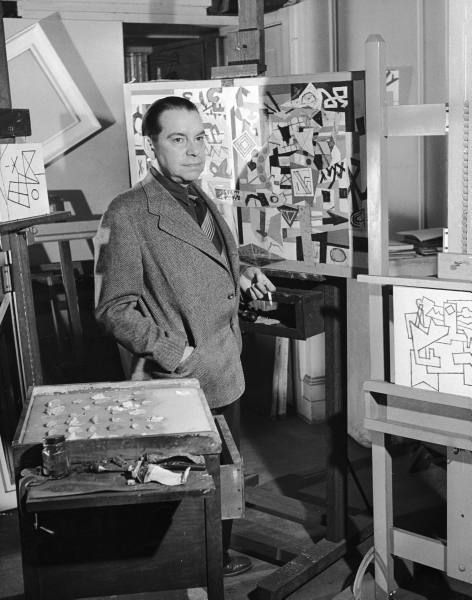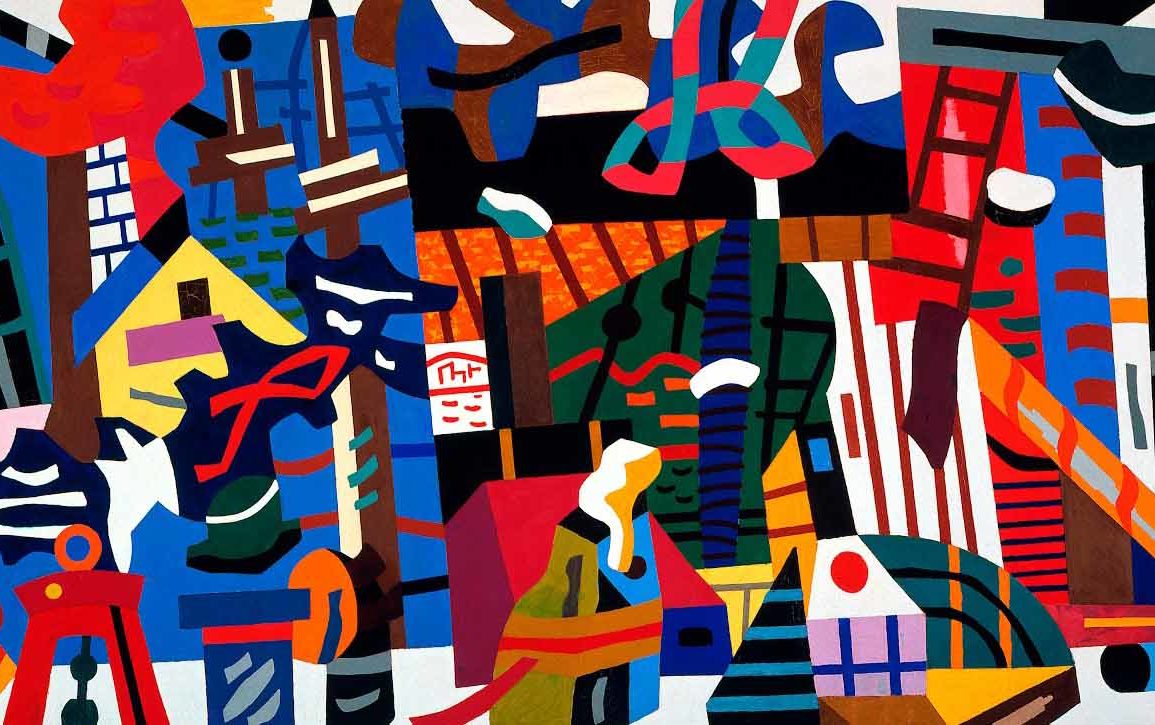Before the Campbell Soup tote bags and Hello Kitty fashions took over the giftshops, there were early pop art pioneers who paved the way for commercial success of the genre today. Juxtapose hard-edged geometric shapes and bold enigmatic graphics with pop-culture references and you’d get Stuart Davis. A master of modernist strokes, this jazz-influenced visionary represented one of the most vibrant eras in American culture. The seminal exhibition of the proto-pop art artist has made its way to the West Coast. Stuart Davis: In Full Swing is on display through August 6th at the De Young Museum in San Francisco.

Over seventy pieces highlight 43 years of innovation and experimentation in kinetic composition. The retrospective begins in the early 1920s with Davis’s breakthrough painting of flattened tobacco packaging Lucky Strike and concludes with Fin, unfinished canvas started prior to his death. Davis’s journey transforming American Art commenced with the decision to capture domestic items and commercial products. He continued to find abstract elements in the concrete thereby formulating his own rules of Cubism. Davis manipulated colors to create a space of movement on a flat canvas. Behind the bright colors and playful angular shapes, there were hidden meanings often revealed with embedded words and symbols. Davis treated letters as shapes and incorporate texts in his paintings. His method was to cross over realism and abstraction, texts and images, flatness and volume, high and low culture to extoll life’s everyday experiences.
Throughout the exhibition, the show’s curators Barbara Haskell and Harry Cooper emphasize how the artist’s aesthetic was greatly influenced by jazz composition and performance. Throughout his career, he tended to revisit earlier pieces and rework them by changing the colors or adding different elements. “It’s the same thing as when a musician takes a sequence of notes and makes many variations on them,” Davis himself had once explained. For those interested in art history (or just good art) this exhibition is a good start to enhance your appreciation of the medium and understanding of Davis’s immense contribution to American Modernism. No optical illusions, only joy!
Text by Marisa Tania, BA Fashion Journalism.



